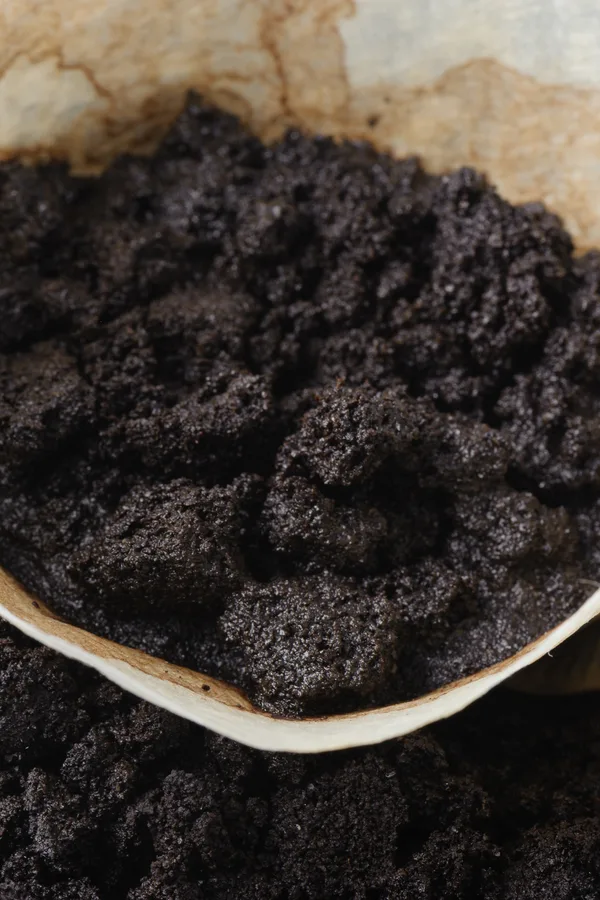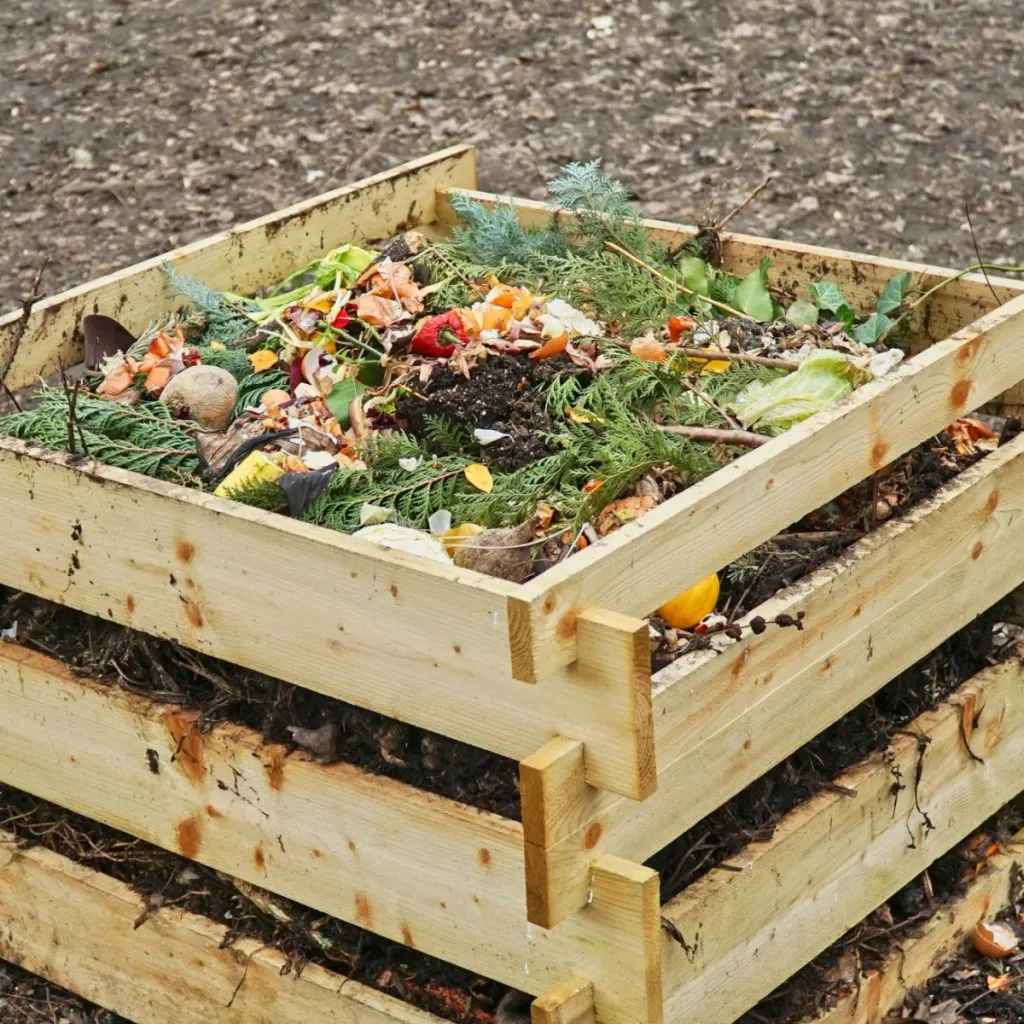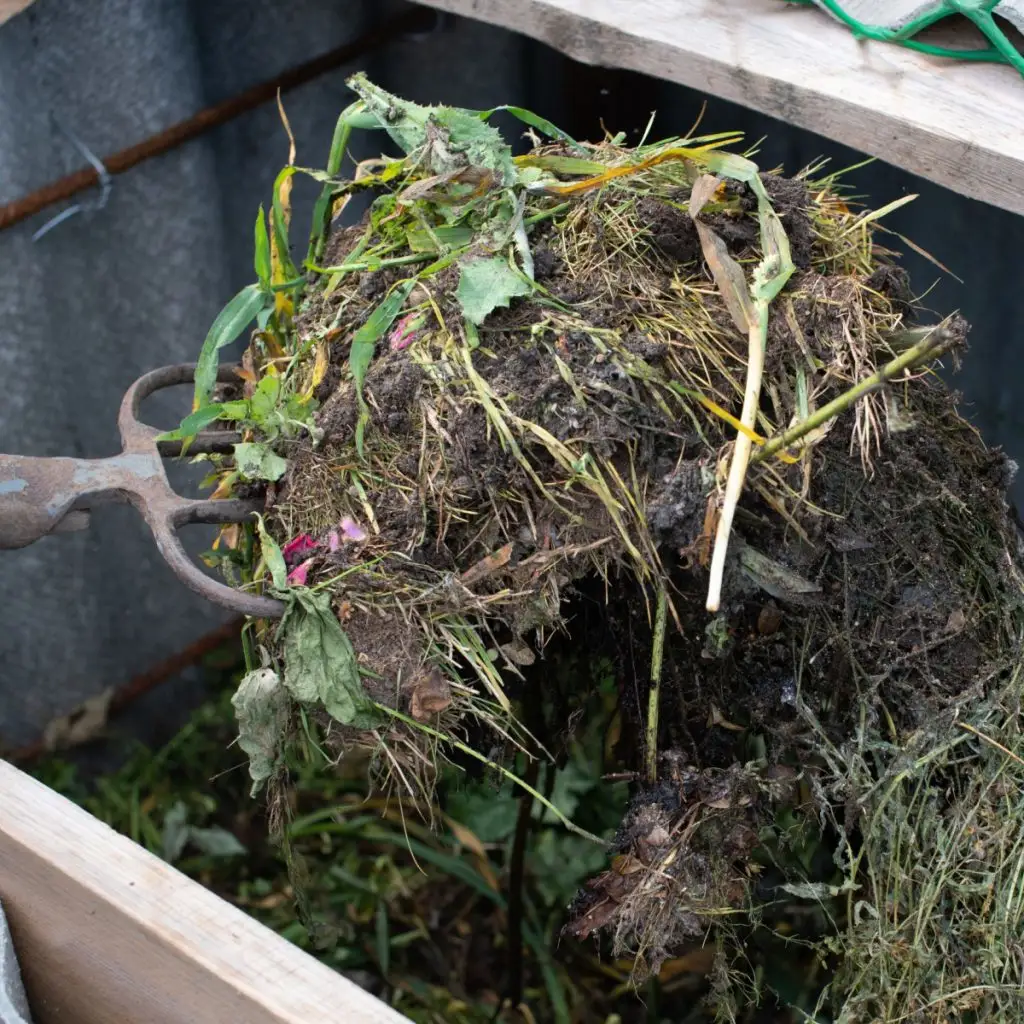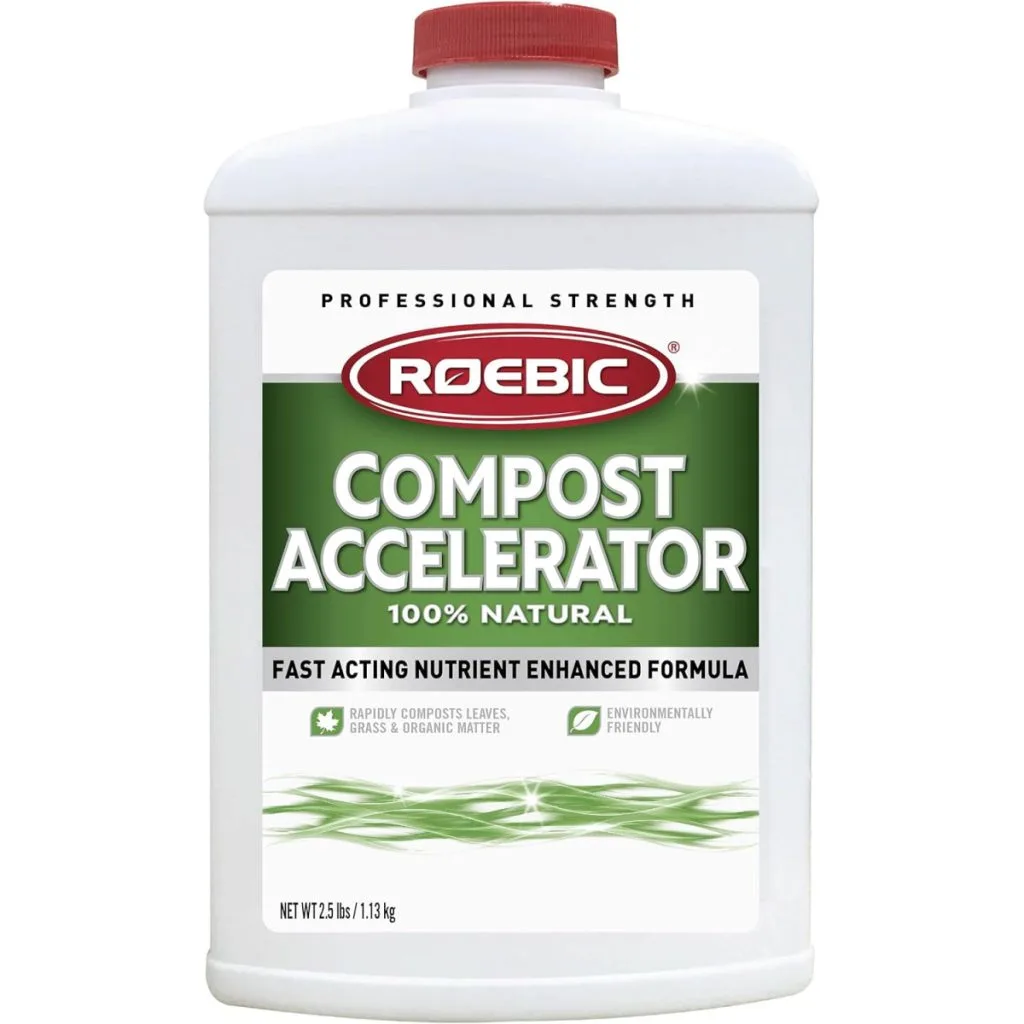Looking for a few simple secrets to create the perfect spring compost pile that heats up quick – and gives you great compost to use as early as this summer?
One thing is for sure, nothing can help boost the vitality and production of your vegetable garden and flowerbeds like compost. And there is no better way to make sure you have plenty on hand for the long growing season ahead than by creating a hard working compost pile early.
Spring is the perfect time for creating a great compost pile. For starters, there are mountains of materials available to get a great pile underway. In addition, as the temperatures begin to rise, it creates the perfect environment for a pile to heat up and begin decomposing.
Here at the farm, we always try to start a brand new pile in the spring. With spring planting, we know we will use up all of the existing compost we have on hand in short order. But by creating a fast working pile early in the growing season – it allows us to still have compost in the summer for powering plants and making compost tea.
So how do you create a fast working pile? Believe it or not, by simply following three key tips, you can have your pile hot and cooking down in just a few weeks – and enjoy usable compost in as little as 60 days!
How To Create The Perfect Spring Compost Pile
#1 – Build Your Spring Compost Pile All At Once
For starters, you need to treat your spring compost pile and the effort you put into it a bit differently from a normal pile. If at all possible, it’s a great practice to create and build your spring pile all at once. Why? Because by gathering a single bounty of materials over the course of a week or so, shredding them up, and not adding more materials, you can create a pile that can be used by mid-summer.
For years, we have practiced this approach, and it works like a charm. Once we build our spring pile, we just continue to keep our regular compost bins going for any new material. This way, we can concentrate on getting that specific pile heating up and finishing. By keeping any new materials out, the pile simply heats up and goes to work.
#2 – Shred All Of The Ingredients
One of the biggest mistakes home composters make is to add whole ingredients to their compost pile. Doing so will result in a compost pile that can take not months, but years to decompose!
As you build your pile, reduce the materials to the smallest size possible. The smaller the better! By doing this, you are accelerating the decomposition process ten fold. Not only do smaller pieces break down faster, all of the torn edges of the small pieces allow for more surface edge areas to decompose.
As an example, think of a large pumpkin. Put in a pile, it will decompose slowly from the inside out. But when cut up into tiny pieces, each of those torn edges of the smaller pieces will start breaking down. The end result is a pumpkin that decomposes in a few days instead of months.
If you have a home chipper / shredder, by all means, use it. But you can also use your push mower or riding mower to mulch up leaves and scraps fast. If you have a bagging attachment, it makes it even easier. We do this all the time and it works like a charm.
For kitchen scraps, give any peels, cores and rinds an extra fine chop before taking them out to the pile. The end result will be a compost pile that heats up fast and is ready in just a few months. And that can be quite handy for powering your summer crops and flowers!
Listen In To Our Podcast On How To Make Compost Tea & Get Your Plants Growing Big – Naturally!
#3 Create The Perfect Size Spring Compost Pile – With The Perfect Ingredients!
Last but not least, everything comes down to creating a pile that is big enough to heat up, but not to big to maintain. And, of course, filling it with the right mix of materials!
To create the ultimate compost pile that heats up and decomposes quickly, you need to create a pile that is at least 3 feet wide, 3 feet tall, and 3 feet deep. This allows enough mass to get the core of the pile to heat up.
That size is also important because it is easy to manage. As you will see below, to create a compost pile that works fast, you need to turn it frequently. The 3′ x 3′ x 3′ size is large enough to heat up, but small enough to still work.
As for filling it up – the good news is there are plenty of materials to find in the early spring to create a 3’x3’x3′ compost pile. Both outside – and inside as well!

Start With Cleaning Your Flowerbeds
For starters, clearing and cleaning your flowerbeds can give you a mountain of composting materials. Old leaves, decaying perennial foliage and spring pruning materials are all excellent for the pile.
By spring, these materials have already begun to break down from the perils of winter. Not only are they great for building mass into your pile, they also will decompose much faster at this point.
Another great addition are any fresh spring grass clippings from your lawn. If you happen to have chickens or farm animals, or have friends or neighbors who do, their bedding and manure are incredible for adding to a spring pile. By spring, most of their pens are overflowing with bedding, making it easy to source.
Kitchen Scraps Make The Perfect Addition To A Spring Compost Pile
But don’t stop with just what is outside, there are plenty of materials for composting available indoors as well. Especially when you look at what you can find in your kitchen.
Kitchen scraps are usually quite plentiful all year round, and they make a great addition to a pile. Banana peels, orange rinds, lemon rinds, and the skins of all fruits can go in. As can potato peels, carrot peels and all vegetable remnants.
Vegetable and fruit scraps break down fast in a pile, and help to heat it up as they do. Don’t forget other compostable materials such as egg shells, peanut shells and even milk that has passed its expiration date.
Finally, the coffee grounds from your morning cup of Joe are one of the best compost pile ingredients around. Coffee grounds are full of nitrogen, and help to heat up a pile to speed decomposition. Don’t forget to add that coffee filter too, most are 100% compostable.
As an added help, throw a 5 gallon bucket of compost from your regular pile into your new pile. The microorganisms and bacteria will help activate your new pile even faster. And if you don’t have any existing compost, use a compost starter mix. It truly will make your pile break down faster than ever! Affiliate Link: Roebic CA-1 Bacterial Compost Accelerator
Here is to creating your own early spring compost pile this year, and to an incredible garden season! Happy Gardening, Jim & Mary.
Old World Garden Farms
Jim and Mary Competti have been writing gardening, DIY and recipe articles and books for over 15 years from their 46 acre Ohio farm. The two are frequent speakers on all things gardening and love to travel in their spare time.
As always, feel free to email us at thefarm@owgarden.com with comments, questions, or to simply say hello! You can sign up for our free email list in the subscribe now box in the middle of this article. Follow us on Facebook here : OWG Facebook. This article may contain affiliate links.



